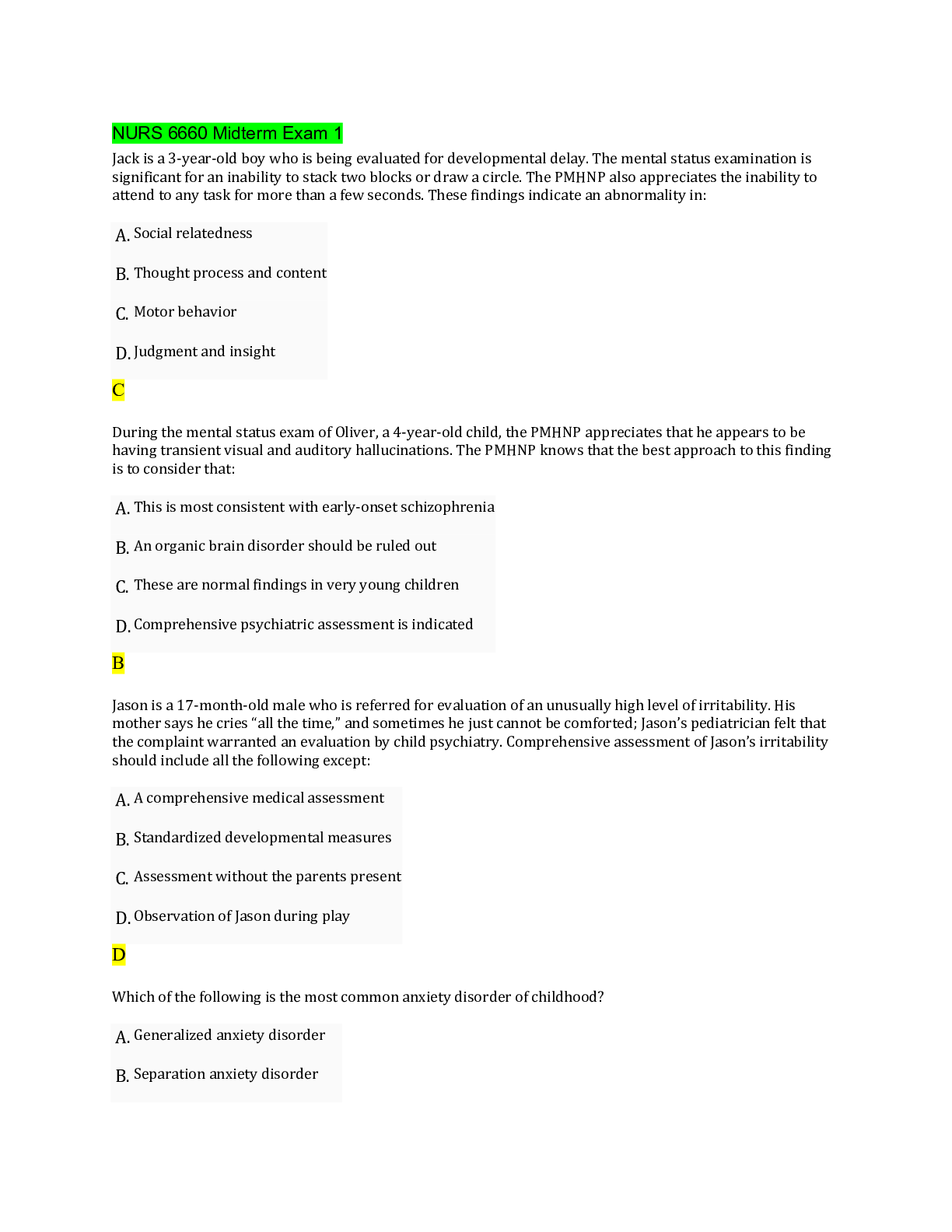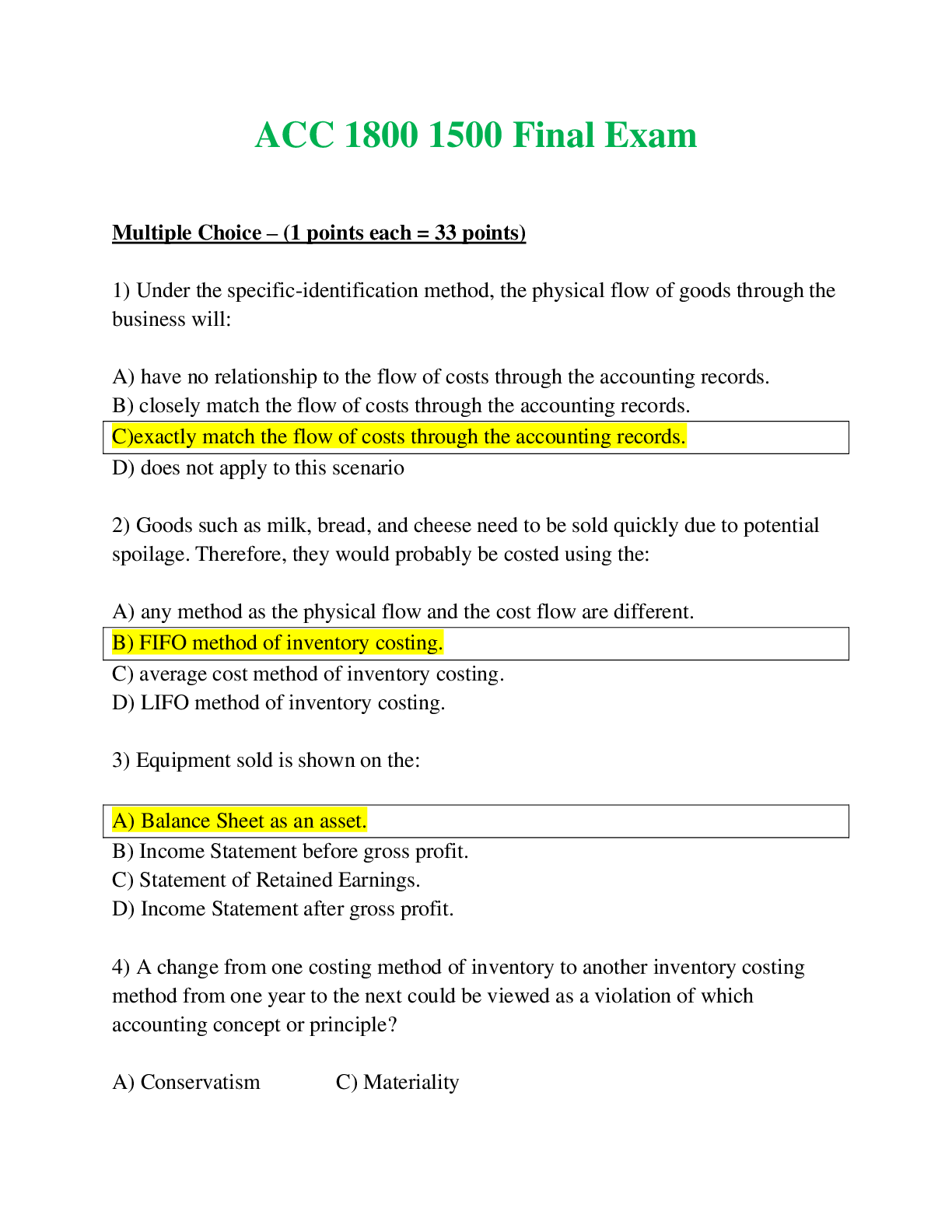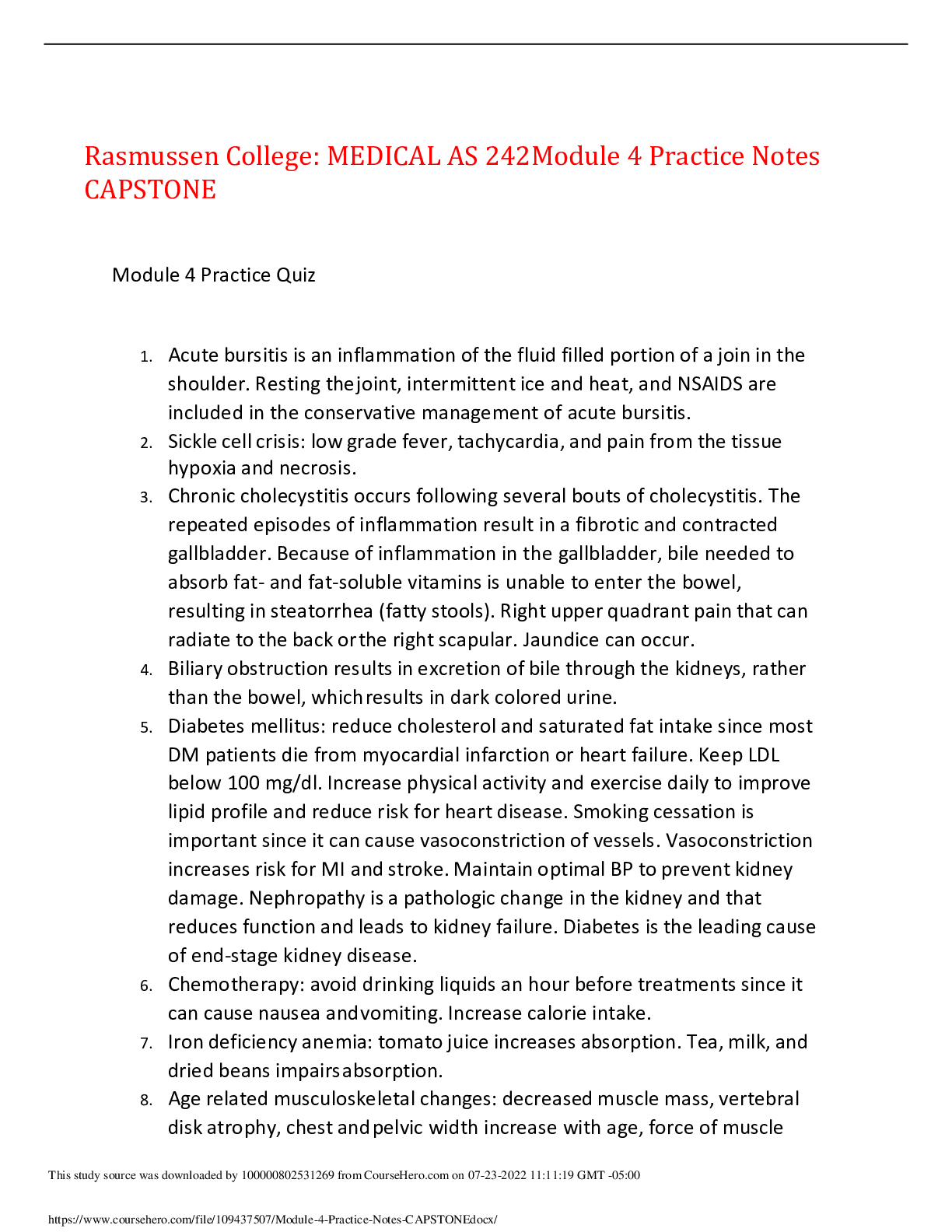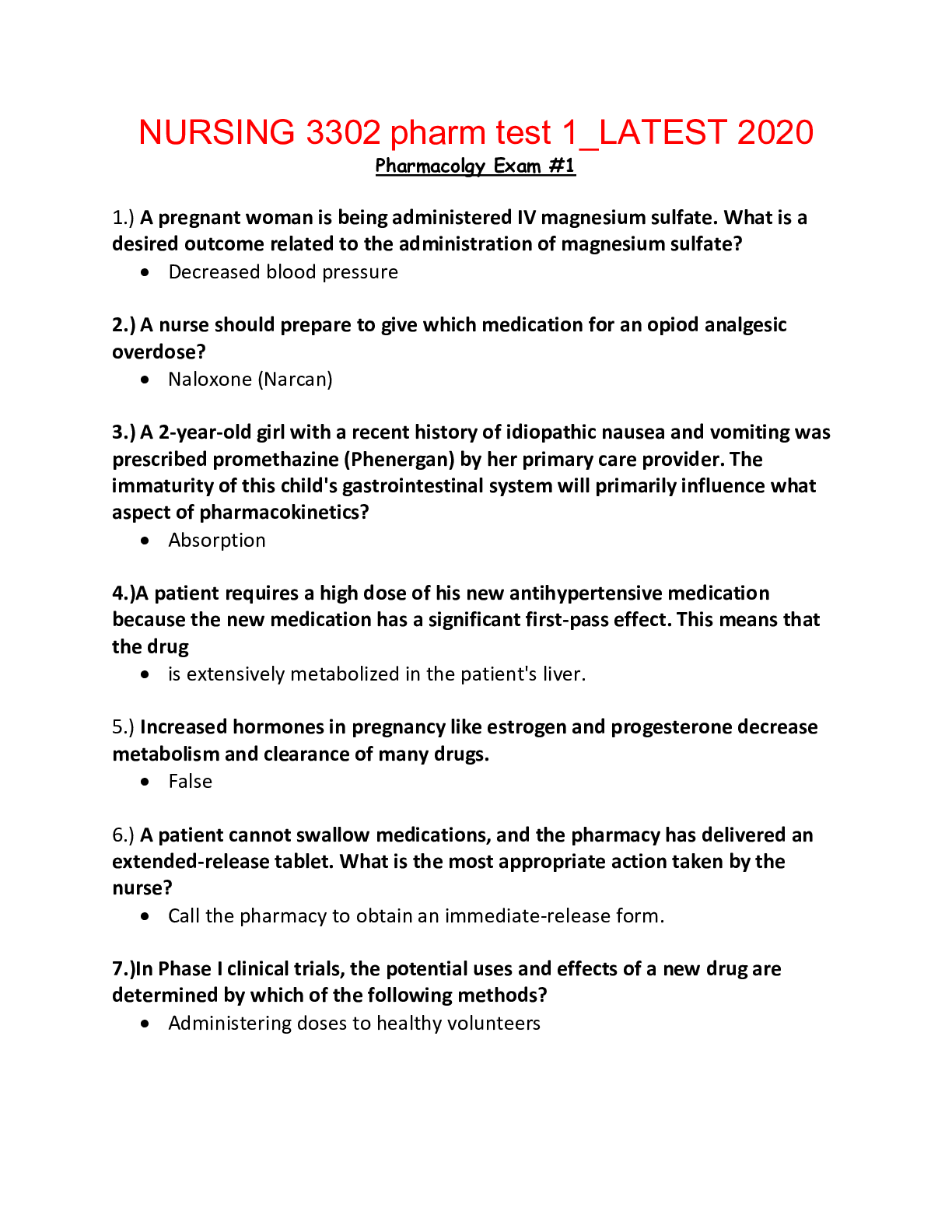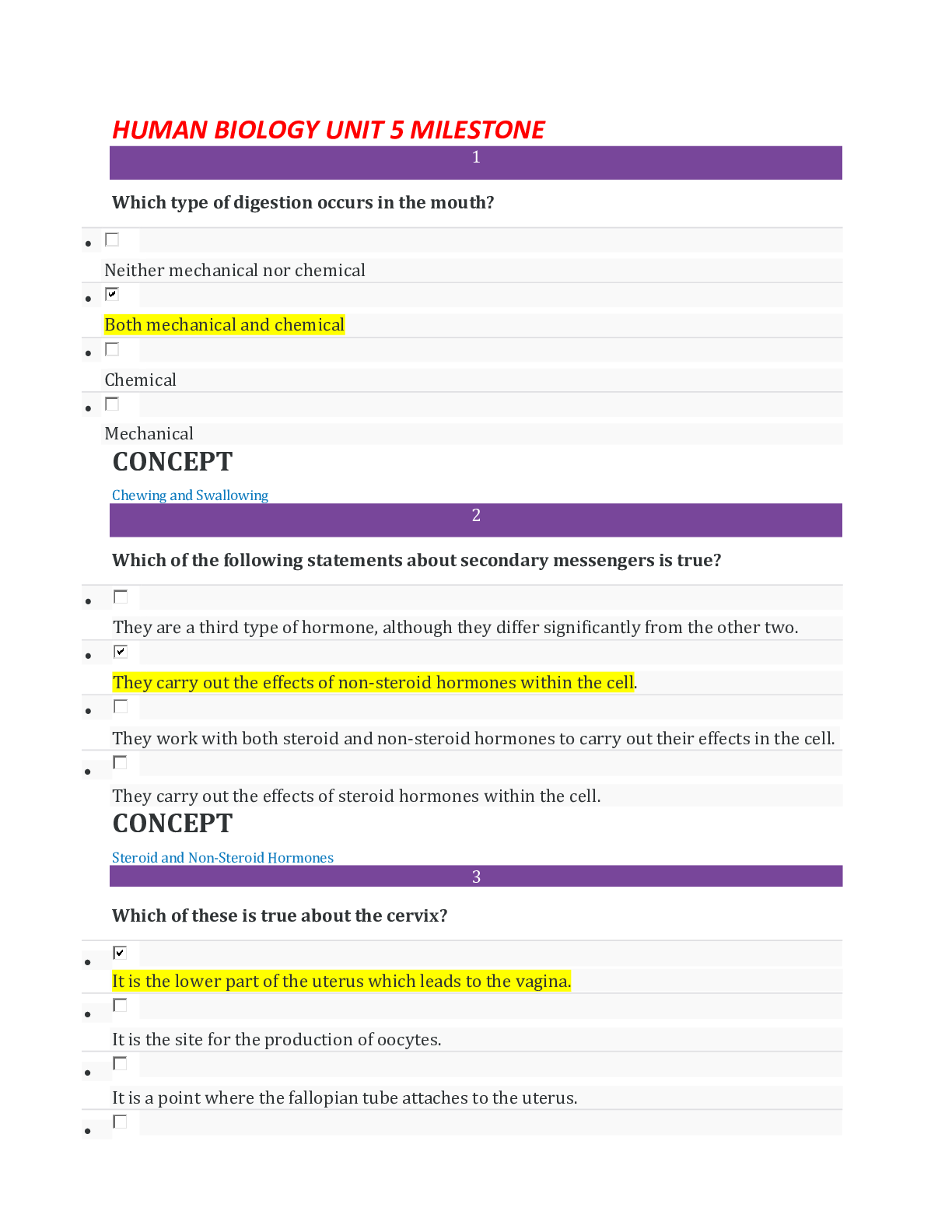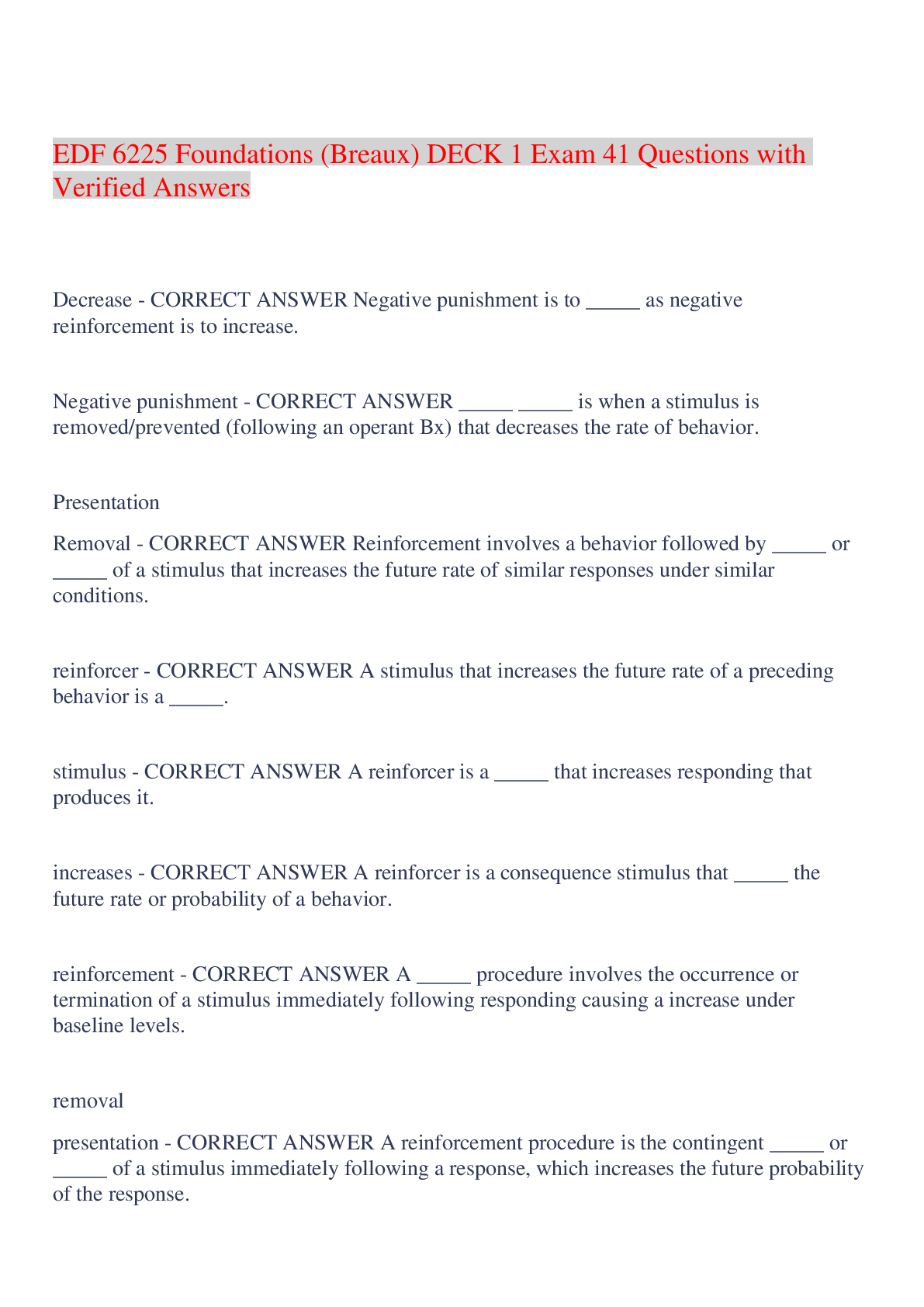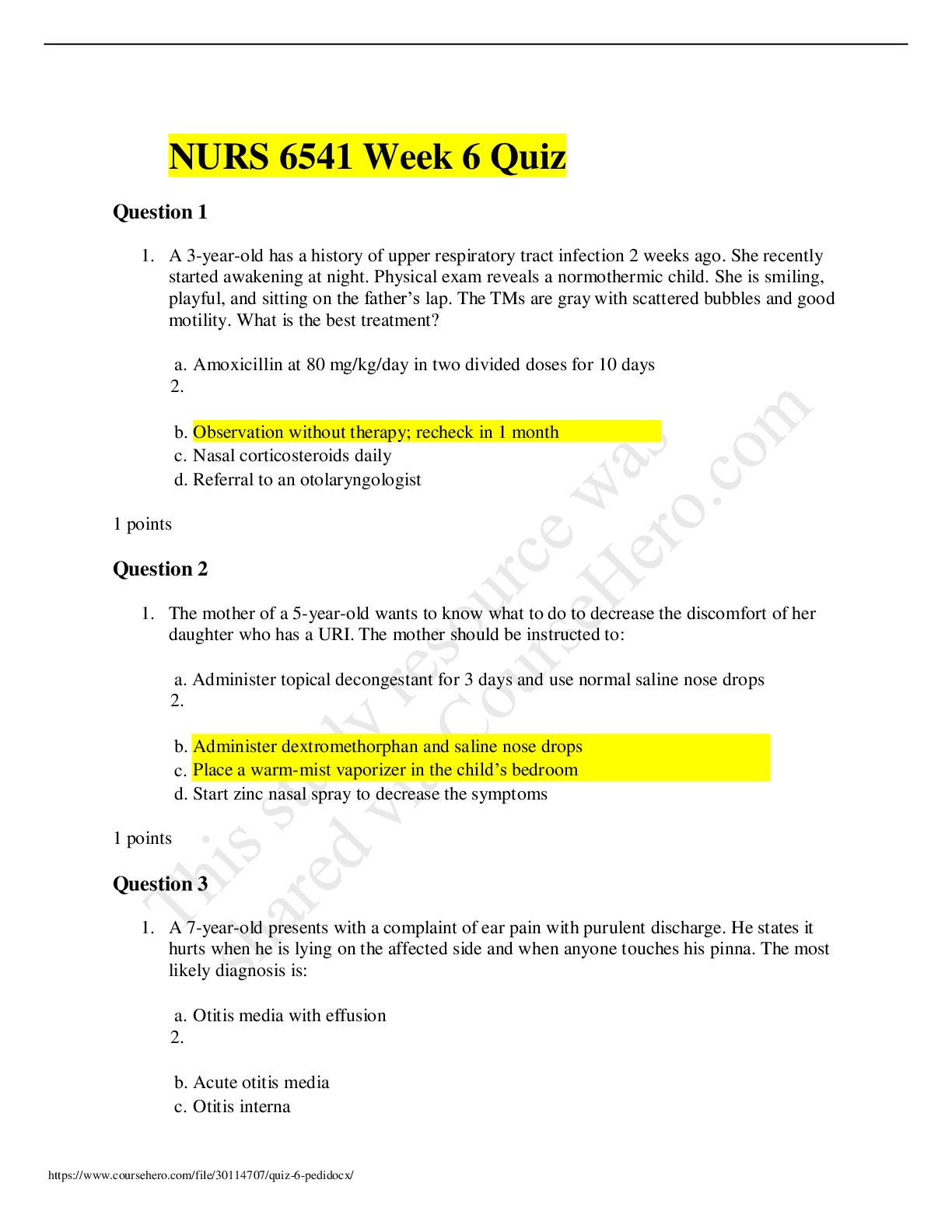NR 508 Week 6 Quiz,100% correct
Document Content and Description Below
1. A patient is diagnosed with a condition that causes chronic pain. The primary care NP prescribes an opioid analgesic and should instruct the patient to: (Points : 2) Question 2.2. A patient wh... o is taking methotrexate for RA sees the primary care NP for an annual physical examination. The patient’s alanine aminotransferase (ALT) and AGT are elevated. The NP should: (Points : 2) Question 3.3. A patient who has migraine headaches tells the primary care NP that drinking coffee and taking nonsteroidalantiinflammatory drugs (NSAIDs) seems to help with discomfort. The NP should tell the patient that: (Points : 2) Question 4.4. The primary care NP sees an adolescent who reports moderate to severe dysmenorrhea. The NP recommends an NSAID and counsels the patient about its use. Which statement by the patient indicates a need for further teaching? (Points : 2) Question 5.5. A 60-year-old woman has a central dual-energy x-ray absorptiometry with a T-score of 1.9. A health history reveals no risk factors for osteoporosis. The primary care NP should: (Points : 2) Question 6.6. A 50-year-old white woman who is experiencing menopause asks the primary care NP what she can do to prevent osteoporosis. She has a negative family history and no risk factors. The NP should counsel her to: (Points : 2) . Question 7.7. A patient has been taking an opioid analgesic for 2 weeks after a minor outpatient procedure. At a follow-up clinic visit, the patient tells the primary care NP that he took extra doses for the past 2 days because of increased pain and wants an early refill of the medication. The NP should suspect: (Points : 2) Question 8.8. A patient reports having an acute onset of low back pain associated with lifting a heavy object the day before. Besides advising the patient to rest and apply ice, the primary care NP should prescribe: (Points : 2) Question 9.9. A patient who is taking an antibiotic to treat bronchitis reports moderate rib pain associated with frequent coughing. The primary care NP should consider prescribing: (Points : 2) Question 10.10. A patient who has migraine headaches without an aura reports difficulty treating the migraines in time because they come on so suddenly. The patient has been using over-the-counter NSAIDs. The primary care NP should prescribe: (Points : 2) Question 11.11. A patient comes to the clinic and reports recurrent headaches. The patient has a headache diary, which reveals irritability and food cravings followed the next day by visual disturbances and unilateral right-sided headache, nausea, and photophobia lasting 2 to 3 days. The NP should recognize these symptoms as _____ migraine. (Points : 2) Question 12.12. The primary care NP is performing a medication reconciliation on a patient who takes digoxin for congestive heart failure and learns that the patient uses ibuprofen as needed for joint pain. The NP should counsel this patient to: (Points : 2) Question 13.13. A 70-year-old patient who has a high fracture risk has been taking alendronate (Fosamax) and calcium for 6 months. The primary care NP orders a urineNTx level, which is 42. The NP should discontinue the alendronate and prescribe: (Points : 2) . Question 14.14. A patient who has a history of stomach ulcers is taking a nonselective NSAID along with a DMARD for RA. The primary care NP should: (Points : 2) Question 15.15. A patient who has mild to moderate migraine headaches has severe nausea and vomiting with each episode. For the best treatment of this patient, the primary care NP should prescribe: (Points : 2) Question 16.16. A patient is taking 81 mg of aspirin daily to decrease MI risk and uses acetaminophen for mild osteoarthritis symptoms. For flare-ups of osteoarthritis pain, the primary care NP should prescribe: (Points : 2) Question 17.17. A 60-year-old female patient has begun taking a daily bisphosphonate to prevent osteoporosis and complains of gastrointestinal (GI) upset and dyspepsia. The primary care NP’s initial response should be to: (Points : 2) Question 18.18. A patient has been taking a COX-2 selective NSAID to treat pain associated with a recent onset of RA. The patient tells the primary care NP that the pain and joint swelling are becoming worse. The patient does not have synovitis or extraarticular manifestations of the disease. The NP will refer the patient to a rheumatologist and should expect the specialist to prescribe: (Points : 2) Question 19.19. A patient reports having persistent mild to moderate pain in both knees usually associated with standing. The patient reports knee stiffness for 15 to 20 minutes each morning. The primary care nurse practitioner (NP) learns that the patient has used heating pads and acetaminophen, which no longer relieve the pain. The NP orders an erythrocyte sedimentation rate, which is normal. The NP should consider prescribing: (Points : 2) Question 20.20. A patient is taking a cytokine immunomodulator to treat RA. The primary care NP caring for this patient should: (Points : 2) Question 21.21. A patient who is obese and has hypertension is taking a thiazide diuretic and develops gouty arthritis, which is treated with probenecid. At a follow-up visit, the patient’s serum uric acid level is 7 mg/dL, and the patient denies any current symptoms. The primary care NP should discontinue the probenecid and: (Points : 2) Question 22.22. A patient who has a previous history of renal stones will begin taking probenecid for gout. The primary care NP should: (Points : 2) Question 23.23. A patient with lower back pain and right-sided sciatica has taken an NSAID and a TCA for 1 week. The patient reports some decrease in pain but is experiencing increased tingling and numbness of the right leg. The primary care NP should: (Points : 2) Question 24.24. A patient has recent weight loss, fatigue, and recurrent low-grade fever along with pain and stiffness of knees and hands. The primary care nurse practitioner (NP) notes symmetric joint swelling and warmth of these joints. The NP should: (Points : 2) Question 25.25. A 50-year-old woman with osteopenia will begin taking raloxifene (Evista). When counseling this patient about this drug regimen, the primary care NP should tell her to: (Points : 2) bisphosphonates. [Show More]
Last updated: 2 years ago
Preview 1 out of 8 pages
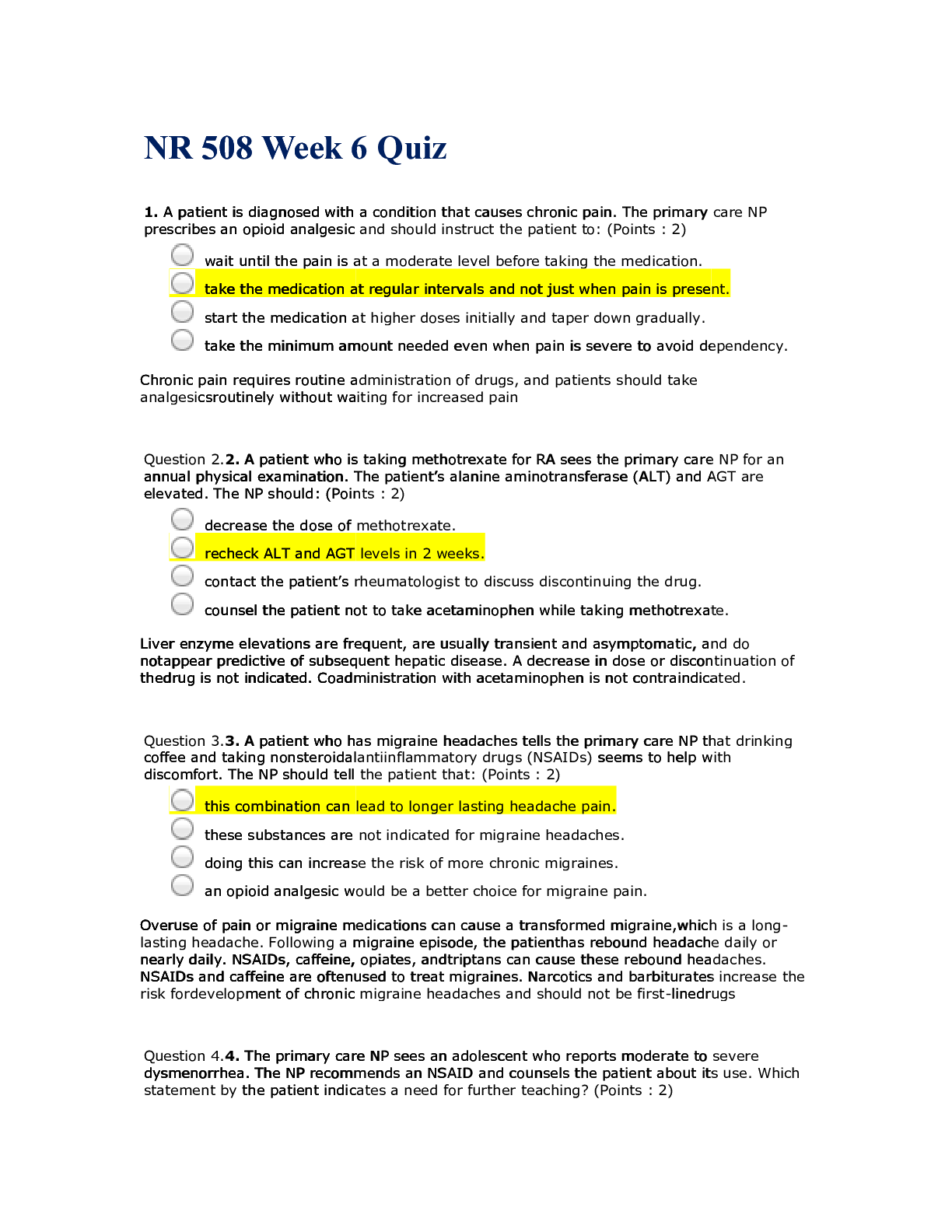
Buy this document to get the full access instantly
Instant Download Access after purchase
Buy NowInstant download
We Accept:

Reviews( 0 )
$19.00
Can't find what you want? Try our AI powered Search
Document information
Connected school, study & course
About the document
Uploaded On
Jun 20, 2020
Number of pages
8
Written in
Additional information
This document has been written for:
Uploaded
Jun 20, 2020
Downloads
0
Views
83


